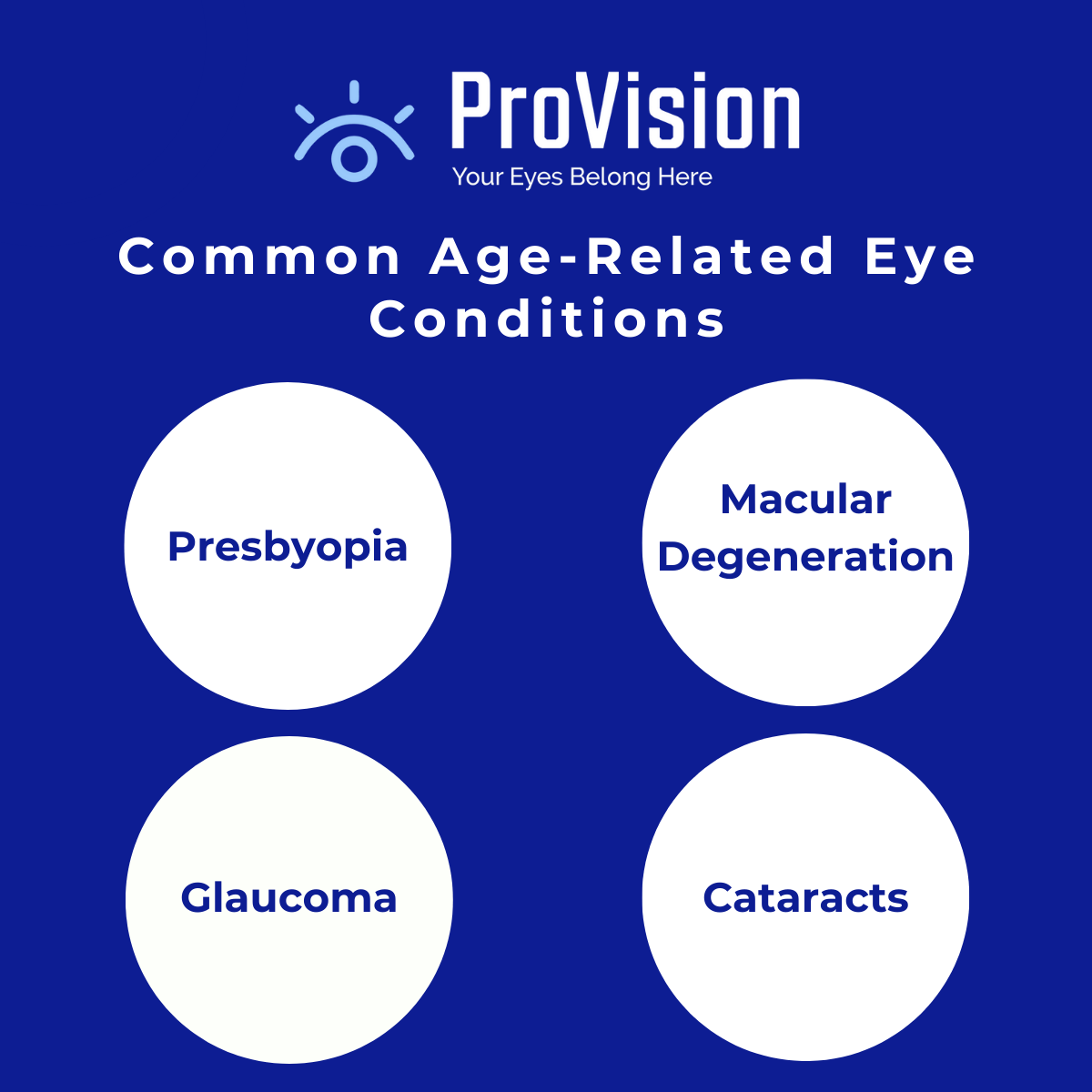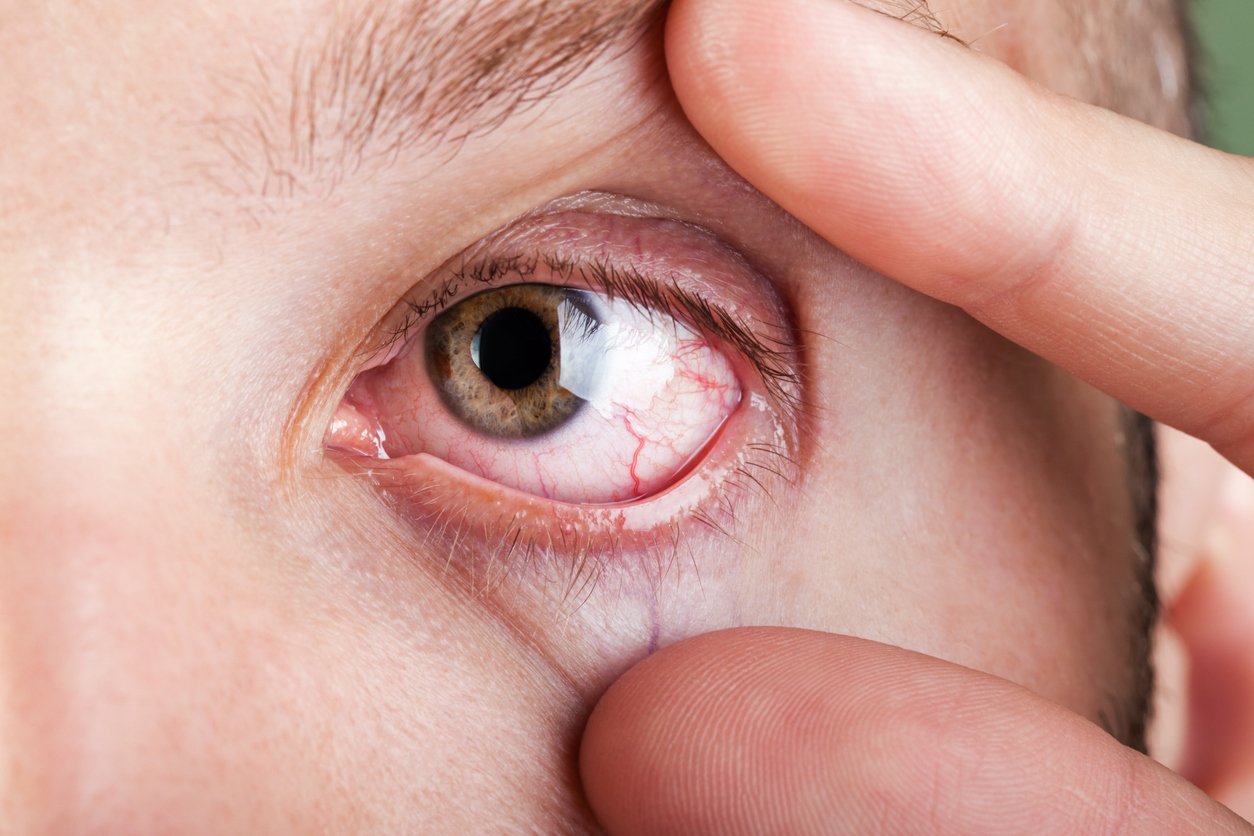Why is My Vision Getting Worse?
If your vision is getting worse, it can be related to an eye condition, lifestyle choices, age-related factors, or other health-related causes. Many vision-related problems are treatable or correctable, so it’s important to understand the reasons why vision can worsen. Identifying the cause of declining vision early can help prevent further deterioration and allow for effective treatment options.
Eye Conditions
Vision conditions and eye disorders are very common, both in the United States and worldwide. According to the World Health Organization, over 2.2 billion people have a near or distance vision impairment. While the risk of developing one of these conditions can increase with age, many eye conditions can affect people of all ages. Worsening vision might be due to the development of one of these conditions:
Refractive Errors
Refractive errors, such as myopia (nearsightedness) and hyperopia (farsightedness), affect millions of people of all ages worldwide. These conditions occur when the shape of the eye prevents light from focusing correctly on the retina.
Astigmatism
One of the most common causes of blurry vision, astigmatism results from an irregularly shaped cornea or lens. This condition is often corrected with eyeglasses, contact lenses, or refractive surgery.
Age-Related Presbyopia
Far-sightedness is a common condition that affects people of all ages, but many people in their 40s or older have a type of far-sightedness called presbyopia, an age-related condition that causes loss of clear close-up vision. Untreated presbyopia can result in the inability to read and perform other tasks that require close viewing.
Glaucoma
Glaucoma refers to a group of eye conditions that cause increased pressure in the eye, leading to optic nerve damage and potential blindness.
Types of Glaucoma:
Open-angle glaucoma: Most common type, develops slowly and may not show symptoms until vision loss occurs
Angle-closure glaucoma: Rare form of glaucoma that causes sudden blockage of fluid drainage and rapid increase in eye pressure
Secondary glaucoma: Caused by other underlying eye conditions, such as cataracts
Congenital glaucoma: Develops in children and infants with a rare abnormality in the drainage system of their eyes
Incorrect Eye Condition Diagnosis
An incorrect diagnosis might be negatively affecting your vision. If treatment is not working, consider getting a second opinion from another eye care specialist.
Age-Related Vision Changes
For many people, their eyesight decreases as they age. While this might be upsetting to experience, age-related changes in your eye’s lens are very common and many eye conditions are more common in older populations. These changes are typically not a sign of a more serious problem, however, it is important to be aware of them so they can be properly managed and corrected.
Treatment Options can include:
Corrective eyeglasses, including reading glasses or bifocals
Contact lenses designed to address presbyopia
Surgical options like refractive lens exchange or lens implants
Eyelid Cleaning Treatments
Cataracts
Cataracts cause clouding of the eye’s lens, leading to blurry or faded vision. Age-related cataracts are the most common type and develop gradually over time.
Treatment options for cataracts include:
Prescription glasses or brighter lighting in early stages.
Cataract surgery in later stages.
Age-Related Macular Degeneration
Macular degeneration affects central vision, making it difficult to see objects directly in front of you. It is one of the leading causes of vision loss in individuals aged 60 and older.
There are two types of AMD:
Dry (atrophic) macular degeneration: This is the most common form and occurs when the macula gradually breaks down
Wet (exudative) macular degeneration: A more severe form that results from abnormal blood vessel growth under the retina
Treatment options for macular degeneration can include:
Lifestyle changes such as eating an eye-healthy diet rich in antioxidants
Medication or injections to slow the progression of wet AMD
While it’s important to remember that eye changes are common with aging. Pay attention to any differences in your eyesight and visit an eye care specialist if you notice any sudden changes.
Dry Eye Disease
Many people experience dry eyes at some point in their life, but people with dry eye disease suffer from chronic dry eyes that can be difficult to manage. People suffering from dry eye disease either do not have enough tears, have tears that evaporate too quickly, or a combination of both. Common symptoms of dry eye disease include:
Burning or stinging sensation in the eyes
Feeling sensitive to light
Redness and inflammation
Blurred or changed vision
Watery or mucousy eyes
Excess tearing
Dry eye disease affects people of all ages and its potential causes include hormonal changes, medications, environmental factors, and other medical conditions like meibomian gland dysfunction or Sjögren’s syndrome. It is more common in people older than 40, which is the age when tear production tends to decrease, and in post-menopausal women.
While artificial tears, lubricating eye drops, and prescription medications can provide temporary relief, long-term treatment may be necessary for those with persistent symptoms. At ProVision Eye Associates, we offer cutting-edge dry eye treatments like OptiLIGHT, Forma-I InMode Radio Frequency, and Eyelid Expression to manage dry eye disease.
Lifestyle Factors
There are several lifestyle habits that can contribute to worsening eyesight, including:
Phone and Computer Screens
Excessive screen time can lead to digital eye strain, causing temporary dryness, irritation, and blurred vision. Taking regular breaks and adjusting screen settings can help reduce strain.
Lack of Sleep
Not getting enough rest can result in eye fatigue, blurry vision, and an increased risk of dry eye disease.
Weather and Other Environmental Factors
Exposure to UV rays, air pollution, and dry or windy climates can negatively impact eye health over time.
Underlying Health Issues
Diabetes
Diabetic retinopathy, a complication that affects blood vessels in the retina, can cause blindness and vision loss. Treatment can slow or stop progression, but since diabetes is a lifelong condition, regular eye exams are still necessary.
Injury
Blunt eye trauma or a penetrating injury can cause immediate or long-term vision issues. Eye conditions can also increase your risk of injury due to an increased likelihood of falls or accidents.
Other Potential Causes
Sometimes, eye problems can indicate other conditions, including:
Aneurysm
Cancer
Diabetes
Heart disease
High blood pressure (hypertension)
Multiple sclerosis (MS)
Sjögren’s syndrome
Vitamin A deficiency
Stroke
If vision changes occur suddenly or are accompanied by other symptoms, seek immediate medical attention.
How to Stop Eyesight from Getting Worse
Treatment Options
While some eye conditions are unavoidable, many steps can be taken to slow down vision loss:
Vision Aids: Glasses and contact lenses can correct refractive errors
Medications: Eye drops and oral medications can manage conditions like glaucoma and dry eye
Surgery: Procedures such as cataract removal or corneal transplants can restore vision
Lifestyle Changes
Reduce screen time: Take regular breaks and adjust digital device settings
Get proper rest: Ensure sufficient sleep to allow the eyes to recover
Eat a balanced diet: Foods rich in omega-3s, vitamins A, C, and E, and antioxidants support eye health and an overall healthy lifestyle
Protect eyes from UV rays: Wear sunglasses and limit direct sun exposure
If you’ve noticed changes in your vision, understanding the cause is the first step toward finding a solution. Whether your eyesight is deteriorating due to aging, an eye condition, or lifestyle factors, early intervention and proper eye care can help preserve your vision.
Reach Out to ProVision Eye Associates & Optical
At ProVision Eye Associates, our optometrists are proud to serve Blue Bell, Pennsylvania and the surrounding area with our cutting-edge dry eye treatments, comprehensive eye exams, and other customized services. Schedule an appointment with us today.






